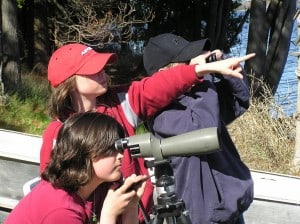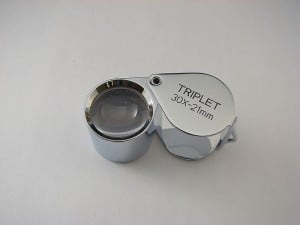Do you ever wonder why some people come back from a hike with colourful stories of close encounters with interesting plants and animals yet when you return, all you’ve seen are mosquitoes, trees and a couple of annoying crows? Why do some people observe so much? Granted, seeing nature is partly knowing where and when to look and knowing what to be looking for. However, it is also all very much about venturing forth with a healthy dose of curiosity, activating all of your senses and having your patience primed.
Hints for Paying Attention
Seeing birds, mammals, insects and even plants depends to a large degree on minimizing unrelated “noise” in your head and truly paying attention to your surroundings. In many ways, paying attention is not unlike the Buddhist concept of “mindfulness.” Try to minimize the noise of extraneous thoughts and conversations and strive to be in the moment. Here are a few hints:
• Be patient. Paying attention requires looking and listening with complete concentration. As the Black-capped Chickadee suggests in his three-noted, slurred springtime song, “be-pa-tient”. This might mean standing motionless until the sparrow you thought you saw in a brushpile finally shows itself again or sitting quietly in your car at dawn scanning a meadow and fenceline, until the coyotes you’d been hoping to see finally make an appearance.
• Shhhh! To really pay attention, you need to be quiet. This doesn’t mean just talking in a low voice but rather keeping all unnecessary talking to a minimum, especially if your goal is to see birds or mammals. In addition, by minimizing noise, you’ll get that much closer to any animal you eventually do see. Be aware, too, of where and how you are walking. This means choosing where to place your feet so to avoid brittle branches or piles of noisy dry leaves. When you do see or hear something of interest, avoid the urge to yell out. It is just as easy to whisper, or better still, to slowly raise your arm and point at what you have seen or heard. By doing so, the bird or other animal will likely stay put for everyone to enjoy – including you.
• Avoid sudden movements. Sudden, jerky movements will scare animals away as quickly as loud noises. You therefore need to get in the habit of moving slowly, smoothly and deliberately, especially as you get closer to whatever you are stalking. Avoiding rapid movements can also be important when you bring your binoculars up to your eyes.
Engaging all of the senses
In today’s modern age, it is easy to be seduced by technology – whether it is a 3-D TV set, the surround-sound of a home theatre system or the amazing graphics of the latest computer game. However, we tend to forget that evolution, too, has endowed humans with remarkable sensory capabilities that can rival or surpass even the latest in technological innovation.
Take our eyes for example. As human beings, we have the sight capabilities of a predator. Stereoscopic vision helps us to see in three dimensions and to gauge depth and position. With the help of special “cones” in the back of our eyes, we can distinguish over 10 million different colours! Our ears are able to hear frequencies between sixteen and 20,000 cycles per second, which is sensitive enough to be able detect wind gently moving through grasses. We can also hear sounds from different locations simultaneously – one could say we even hear in three dimensions. And it doesn’t stop there. With every breath in and out, we also detect a myriad of scents. In fact, recent research by Dr. Andreas Keller at Rockefeller University in New York City has demonstrated that our sense of smell is sensitive enough to detect a trillion different odours! This wonderful sense is evocative enough to bring back distant childhood memories of everything from freshly baked pie to the smell of the spring air. Let’s not forget, too, that we are enveloped in amazingly sensitive skin. Special receptors in the skin called Meissner’s corpuscles can respond to pressures as gentle as the sweep of a cool breeze. Finally, some 10,000 taste buds in our mouth help us to detect the faintest of flavours, including bitterness in concentrations as small as one part per 2 million.
We therefore need to take the time to unplug technology and “plug in” to the natural world through the wonder of these highly-developed senses that we often take for granted. In a way – this is our green conduit – the most basic and arguably, the most powerful way to connect to nature. But, as we’ll see, to drink the world in through our senses takes practice.
Sight
More than anything, humans are visual animals. In other words, we have evolved to make use of sight more than our other senses. We therefore need to take full advantage of this amazing gift of evolution. Here are some activities that can help to maximize our use of sight.
• Use “splatter vision” – When we walk in a natural setting, most of us cast our eyes downward. This makes sense, for our inclination is to avoid stumbling. However, by focusing primarily on our feet, we are missing so much of what is going on all around us. Practice being an “all around watcher” and use what naturalists call “splatter vision”. This means not keeping our eyes in one place for too long. As you walk, remember to look up, glance to the sides, scan what’s happening off in the distance and occasionally take a look behind. By continuously sweeping your eyes in all directions, you are more likely to pick up animal movement in the landscape – perhaps a distant Fisher crossing the road or a hawk soaring overhead. When you arrive at a body of water, look for any dark objects (e.g., ducks, a beaver) swimming or floating on the surface. Also, make a special point of checking out telephone poles and wires, dead branches in the crowns of trees, fence posts, etc. – anywhere a bird might perch.
• Use binoculars – Our sense of sight can be greatly enhanced by learning to use binoculars properly. Many naturalists find 8 X 40 or 8 X 42 binoculars the best choice. They provide good magnification but also offer a wider field of vision. This makes it easier to actually locate a bird our insect with the binoculars and follow it as it moves around. Most serious birders purchase a roof prism design, because they are the lightest, most durable and most waterproof. Good nature-viewing binoculars should also have what’s known as “close focus”. This means that they will focus on objects only a metre or so away. Not only will you be able to study birds up close, but you will also be able to watch butterflies and dragonflies. Remember, too, to hold your binoculars with both hands. For added stability, brace yourself up against a tree trunk, car or building. When you do see a bird or other object you want to check out with the binoculars, begin by locking your eyes on the object. Then, slowly raise your binoculars to your eyes. If you have done this correctly, the bird, insect or mammal should be right in the middle of your field of vision. Don’t make the mistake of simply scanning randomly with your binoculars in the general vicinity of the bird in the hope of stumbling upon it.
• Use a hand lens: A good hand lens can open up an entire new world when used properly. Hold the lens as close to your eye as possible. Bring the object you are looking at towards the lens (or vice versa) until it is in focus. This usually means getting as close as a couple of centimetres away. For most nature study purposes such as examination of insects, plant parts and rocks, 10 X is an excellent magnification.
Next week, I’ll provide more suggestions and activities for getting the most from our five senses when exploring the natural world. This series of articles is part of an up-coming book I’m co-writing with Jacob Rodenburg, Executive Director of Camp Kawartha, on seasons-based nature activities for kids.

